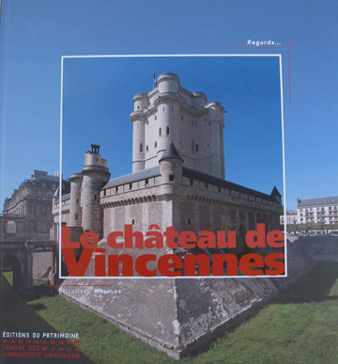
Château can be lazily translated as castle, but a traveler in France soon learns that there are many types of chateaux — and not all of them are castles.
– Château de Versailles is a palace;
– Château Petrus is a vineyard estate;
– a château guest-house or hotel would likely be a large country manor;
– les châteaux de la Loire are mostly Renaissance castles that are best referred to as chateaux (without the hat of a circumflex over the a);
– a château d’eau is a water tower;
– a château de cartes is a house of cards;
– la vie de château is the life of luxury;
– Château de Vincennes is a medieval fortified castle, which is what I’m most likely to think of as castle in France.
I’ve been thinking about the definition of a chateau for two reasons:
1. While writing recently about an exhibition at the Château de Versailles I nearly came to blows with a Frenchman who insisted that I should refer to it as a castle rather than a palace since he remembered being taught in 6th grade that a chateau is a castle.
2. I recently received a copy of a book published by the Center for National Monuments about the Castle of Vincennes naturally entitled Le château de Vincennes.
 There are certainly more dramatically situated fortified castles in France than the Chateau de Vincennes, particularly those darker-stone creatures perched on cliffs and hills in southwest France with imposing towers, crenellations, merlons, machicolations, a drawbridge and a moat. But Vincennes is the only fortified castle in the flat region surrounding Paris and it’s easy to get to—just 20 minutes on the metro from the center of the city and you arrive at the drawbridge.
There are certainly more dramatically situated fortified castles in France than the Chateau de Vincennes, particularly those darker-stone creatures perched on cliffs and hills in southwest France with imposing towers, crenellations, merlons, machicolations, a drawbridge and a moat. But Vincennes is the only fortified castle in the flat region surrounding Paris and it’s easy to get to—just 20 minutes on the metro from the center of the city and you arrive at the drawbridge.
Having spent some time looking west from Paris to the palace of Versailles, I therefore turned my attention east of Paris to the castle of Vincennes. (Not just for historical and architectural reasons, I must say, but also for sporting reasons, since I sometimes play tennis at the courts near the castle or go biking in the woods nearby.)
Le château de Vincennes, the book, is available only in French but it’s heavily and handsomely illustrated so it can serve as an excellent guide or photo album even for someone who might struggle to understand the text. That text, written by Elizabeth Mismes, concisely explains the importance of the castle through the Middle Ages.
In fact, this was one of the most important of royal abodes until Louis XIV moved the Court of France to his new palace at Versailles—after having first ordered the architect Le Vau to built the King’s and Queen’s Pavilions at Vincennes, after which the castle complex was more or less royally abandoned. In her book, Elizabeth Mismes calls this “a kind of treason.”
A brief article about the Castle of Vincennes, particularly it’s royal chapel, can be found on France Revisited here.
Le château de Vincennes, the book, is available, among other places, at the bookstore in the headquarters of the Center for National Monuments located in the Sully Mansion (Hôtel de Sully), 62 rue Saint-Antoine, 4th arrondissement, in the Marais district of Paris.
Le Chateau de Vincennes, the castle, is an easy 20-minute metro ride from the center of Paris. Take the metro to the end of the Château de Vincennes line (line 1), step outside, and cross the drawbridge over the moat.
Endnote: The French equivalent of the expression “A man’s home is his castle” is the proverb “Chabonnier est maître chez soi,” literally meaning that the coalman is master in his own home.

